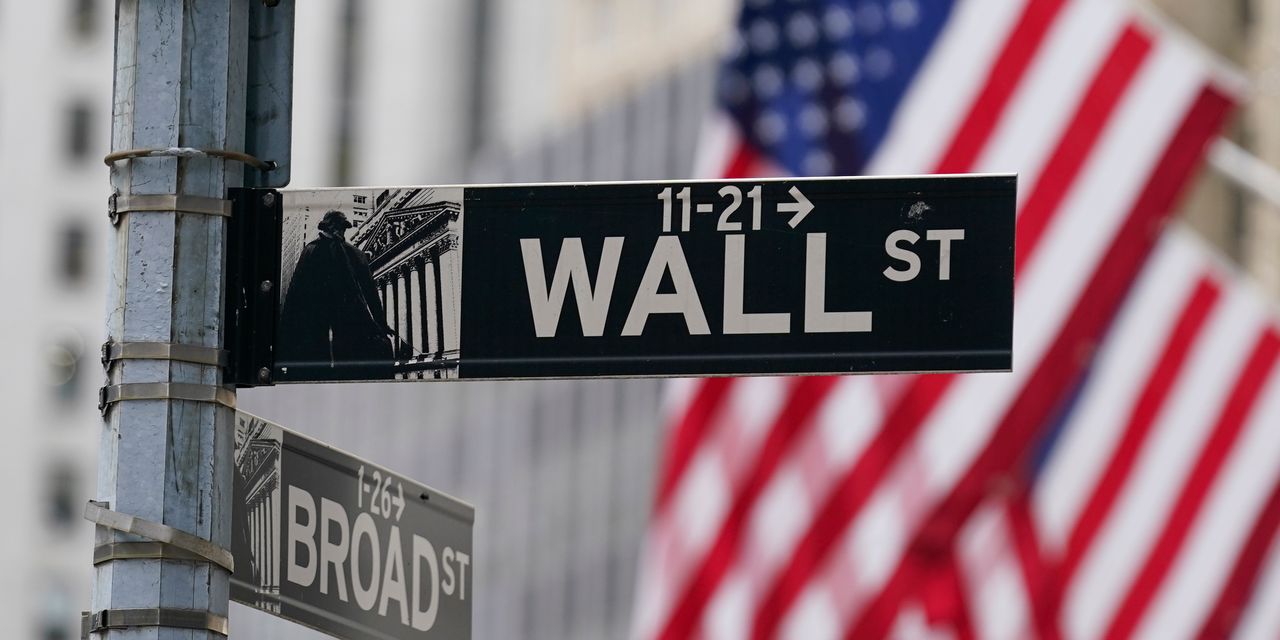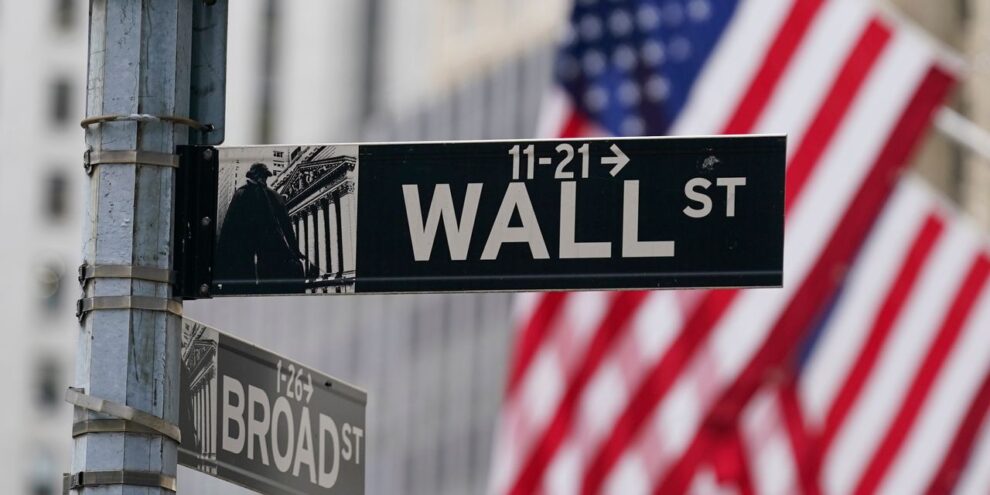
U.S. stocks closed mixed Friday, with the technology-heavy Nasdaq Composite ending higher as the Dow Jones Industrial Average and S&P 500 index slipped, after a stronger-than-expected June jobs report. All three major benchmarks booked weekly gains, with the Nasdaq leading the way up.
How did stocks trade?
- Dow Jones Industrial Average DJIA, -0.15% fell 46.40 points, or 0.1%, to close at 31,338.15.
- S&P 500 SPX dipped 3.24 points, or 0.1%, to finish at 3,899.38, snapping for straight days of gains.
- Nasdaq Composite COMP, +0.12% rose 13.96 points, or 0.1%, to end at 11,635.31, a fifth straight day of gains that marks its longest winning streak since November.
What drove markets?
U.S. stocks ended a choppy trading session mostly lower after Friday’s jobs report showed more robust growth in the American labor market last month than had been expected.
“The labor market is a lagging indicator for where the economy is,” said Matt Stucky, senior portfolio manager at Northwestern Mutual Wealth Management Co., in a phone interview Friday. “The risk of a mild recession is still pretty high here.”
Stock market action was choppy as investors weighed the latest jobs data against fears the Federal Reserve will continue with large interest-rates hikes to cool the economy as it seeks to tame high inflation.
The U.S. created 372,000 new jobs in June, substantially higher than the 250,000 expected by economists polled by The Wall Street Journal.
See: U.S. creates 372,000 jobs in June. Strong labor market a bulwark against recession
“Job gains in June slowed modestly month-over-month but were much better than expected,” said David Kelly, chief global strategist at J.P. Morgan Asset Management, in an emailed note Friday.
“It’s worth emphasizing that employment is generally a lagging economic indicator so this morning’s report does not eliminate the risk of a recession starting soon,” he said. “However, with labor demand still near record highs, this does suggest that the next economic downturn could be a relatively mild one for workers.”
Friday’s job’s report also showed average hourly earnings rose 0.3% in June, slowing from a 0.4% rise the prior month, according to Kelly. On a year-over-year basis, the rise in pay slowed to 5.1% in June, from 5.3% in May.
“Wage growth continues to cool modestly,” he said.
All three major stock benchmarks booked weekly gains though, with the technology-heavy Nasdaq Composite leading the way up. The Nasdaq climbed 4.6% for the week, while the Dow advanced 0.8% and the S&P 500 gained 1.9%, according to FactSet data.
Read: Why a rally in growth stocks could signal ‘peak’ Fed hawkishness has passed
“We’re still in the midst of positive momentum from earlier in the week, so when the selloff failed, the next tactic was to move higher. Nothing else really changed,” said Steve Sosnick, chief strategist at Interactive Brokers, in comments to MarketWatch.
The Nasdaq Composite rose on Friday for a fifth straight day, its longest winning streak since November. The S&P 500 snapped four consecutive days of gains, a stretch that marked its best winning run since late March.
Read: Markets signal recession threat: Why stocks are taking it in stride — for now
Still, the S&P 500 is down around 18% this year, as investors await the bulk of companies’ second-quarter earnings reports in the coming weeks.
“I think it’s going to be tough,” said George Cipolloni, portfolio manager at Penn Mutual Asset Management, by phone Friday. “This could be the first quarter where you see the brunt” of commodity-price and shipping-cost pressures on companies’ profit margins, he said.
In his view, earnings estimates are “too high,” which may lead to a further decline in the stock market. “We could potentially get one more leg down,” said Cipolloni.
Single-stock movers
- Twitter Inc. TWTR, -5.10% shares fell 5.1% following a Washington Post report that led investors to suspect that Elon Musk might be trying to back out of his deal to take the company private.
- PayPal Holdings PYPL, -2.15% shares fell more than 2% after a broker downgrade.
- Enphase Energy Inc. ENPH, +4.65% was the best performer on the S&P 500, with shares climbing around 4.7%.
- Tesla Inc. TSLA, +2.54% rose 2.5%, despite shipping a record 78,906 vehicles in China last month.
- GameStop GME, -4.87% fell 4.9% after layoffs and a CFO change.
How did other assets fare?
- The U.S. 10-year Treasury yield TMUBMUSD10Y, 3.077% rose 9.1 basis points to 3.098%.
- The ICE U.S. Dollar Index DXY, -0.19%, a measure of the buck’s strength against a basket of rivals, was down 0.2%.
- In oil futures CL.1, +2.01%, West Texas Intermediate crude for August delivery CLQ22, +2.01% ended 2% higher to settle at $104.79 a barrel. For the week, oil prices fell 3.4% based on the front-month contract.
- Gold GC00, +0.04% for August delivery GCQ22, +0.04% added nearly 0.2% to settle at $1,742.30 an ounce. Prices for the most-active contract had a weekly loss of 3.3%, according to Dow Jones Market Data.
- Bitcoin BTCUSD, +1.16% was up 1.6% at $21,952.
- In European equities, the STOXX Europe 600 Index closed 0.5% higher Friday to book a weekly gain of 2.45%. London’s FTSE 100 Index ended 0.1% higher Friday, advancing 0.4% for the week.
- In Asia, Japan’s Nikkei 225 Index NIK, +0.10% pared its advance following news of the assassination of former Prime Minister Shinzo Abe, closing 0.1% higher Friday. That brought its weekly gain to 2.2%. China’s Shanghai Composite SHCOMP, -0.25% ended 0.2% lower for a weekly decline of 0.9%, despite reports Beijing is considering further fiscal stimulus. The Hang Seng Index in Hong Kong closed 0.4% higher, trimming its weekly loss to 0.6%.
—Jamie Chisholm contributed to this article.











